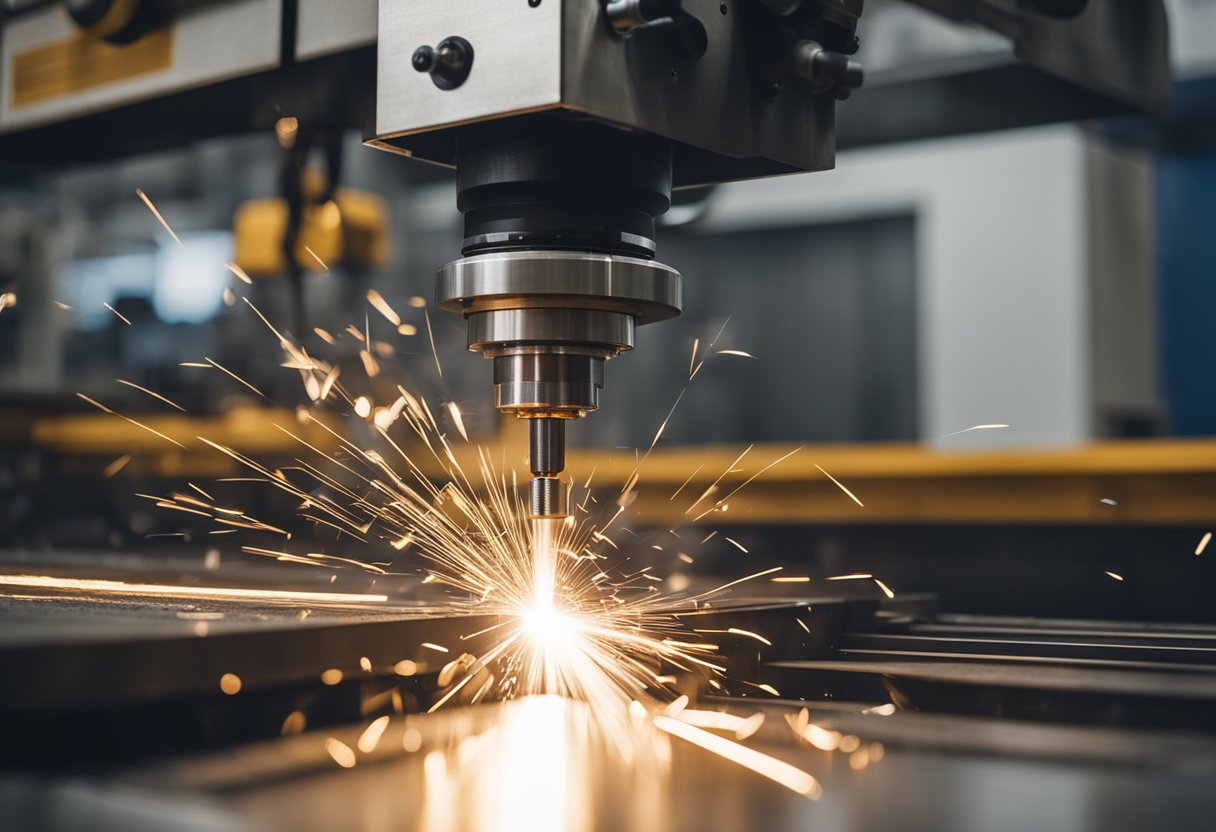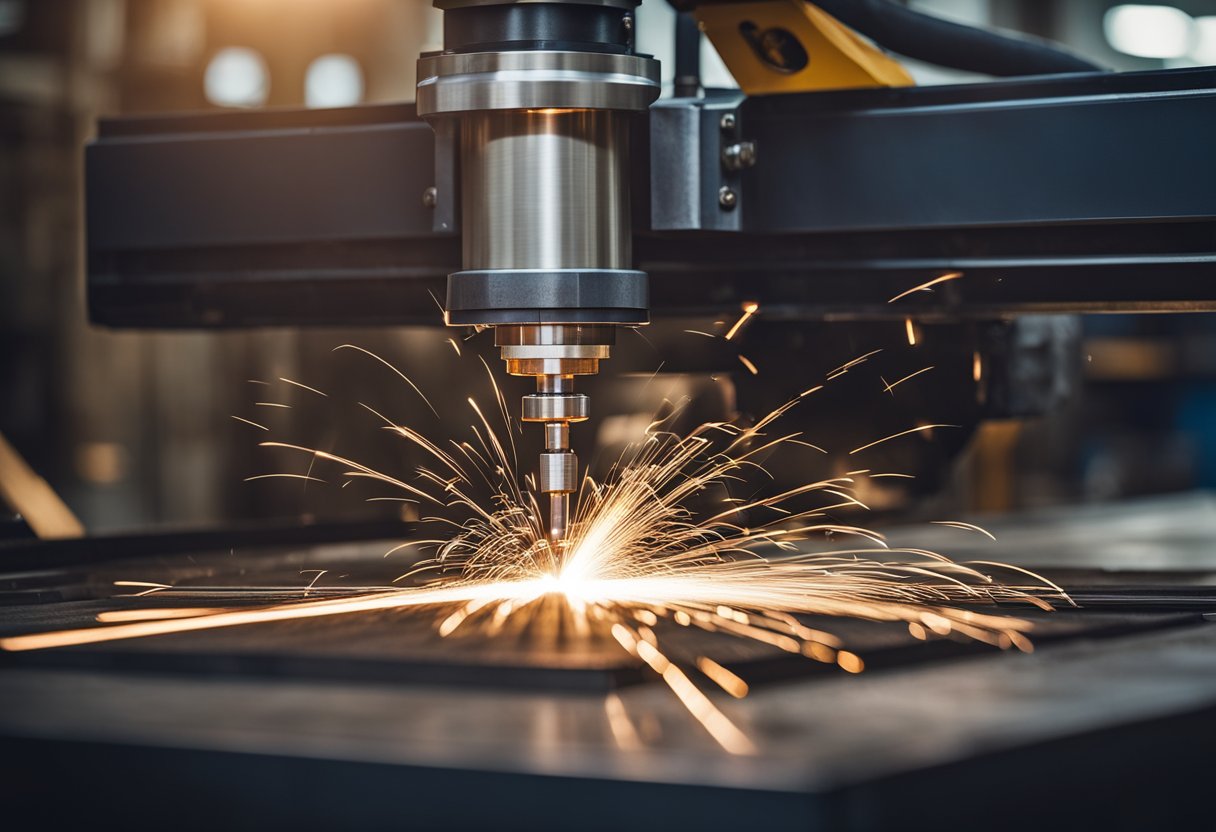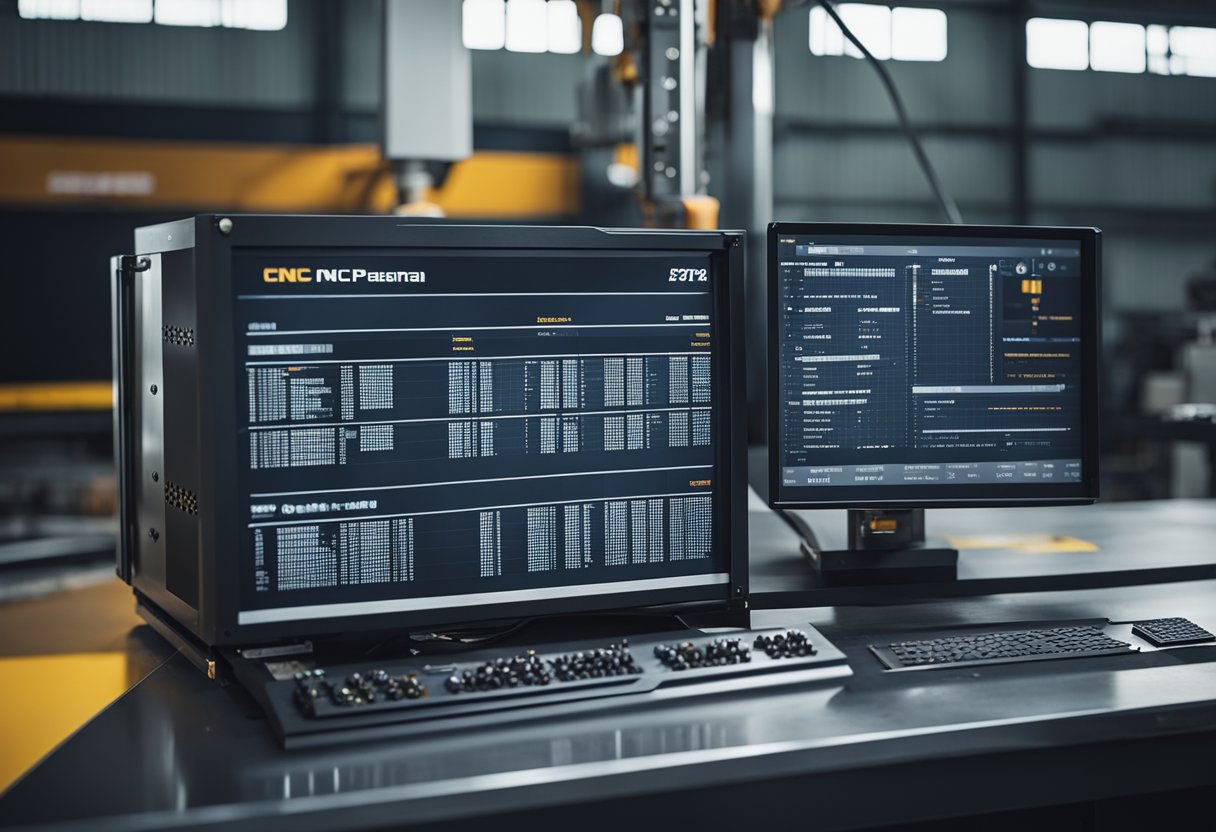CNC Plasma Table: The Ultimate Guide to Choosing the Right One for Your Business
CNC plasma tables are computer-controlled machines used for cutting and shaping various materials such as metal, wood, and plastic. These machines use plasma technology to cut through materials with precision and speed, making them a popular choice for industrial and manufacturing applications.

The CNC plasma table works by using a plasma torch to cut through materials. The torch creates a high-temperature arc that melts the material and blows it away, leaving a clean and precise cut. The machine is controlled by a computer program, which allows for highly accurate and repeatable cuts. This makes it ideal for manufacturing parts with complex shapes and intricate designs.
CNC plasma tables are widely used in industries such as automotive, aerospace, and construction. They offer a cost-effective and efficient way to produce high-quality parts and components. With advancements in technology, these machines continue to become more sophisticated and versatile, making them an essential tool for many businesses.
Understanding CNC Plasma Tables
Components and Technology
CNC plasma tables are machines that use computer numerical control (CNC) technology to precisely cut metal using a plasma torch. The main components of a CNC plasma table include a cutting table, a plasma torch, a CNC controller, and a computer.
The cutting table is the surface on which the metal is placed and cut. It is usually made of steel and has a grid of small holes that allow air to flow through and hold the metal in place. The plasma torch is mounted on a gantry and moves along the X and Y axes to cut the metal.
The CNC controller is the brain of the machine and controls the movement of the plasma torch. It receives instructions from the computer and sends signals to the motors that control the movement of the gantry. The computer is used to create the designs that are cut by the CNC plasma table.
Types of CNC Plasma Tables
There are various types of CNC plasma tables available in the market. Some of the most common types include:
- Portable CNC plasma tables: These tables are designed for small-scale metal cutting and are easy to move around. They are suitable for hobbyists and small businesses.
- Industrial CNC plasma tables: These tables are designed for heavy-duty metal cutting and can handle large sheets of metal. They are suitable for large-scale manufacturing and fabrication.
- Hybrid CNC plasma tables: These tables combine plasma cutting with other cutting technologies, such as waterjet or laser cutting. They can cut a wider range of materials and offer greater precision.
In conclusion, CNC plasma tables are versatile machines that use advanced technology to cut metal with precision. They are available in various types and can be used for a wide range of applications, from small-scale hobby projects to large-scale industrial manufacturing.
Key Features and Specifications

Precision and Accuracy
A CNC plasma table is a precision cutting machine that is capable of cutting metal with a high degree of accuracy. The precision and accuracy of a CNC plasma table depend on several factors, including the quality of the software and control systems, the construction and durability of the machine, and the type of height control system used.
Most CNC plasma tables use either stepper motors or servo motors to control the movement of the cutting torch. Stepper motors are less expensive but less precise than servo motors. However, both types of motors can provide accurate and precise cuts when properly calibrated.
The height control system is another important factor that affects the precision and accuracy of a CNC plasma table. A good height control system can maintain a consistent distance between the cutting torch and the metal being cut, ensuring precise and accurate cuts.
Software and Control Systems
The software and control systems used in a CNC plasma table are critical to its performance and functionality. Most CNC plasma tables use software that allows the user to create and edit cutting files, control the movement of the cutting torch, and adjust the cutting parameters.
The control system is responsible for sending signals to the motors and height control system, ensuring that the cutting torch moves accurately and precisely. A good control system should be easy to use and provide a high degree of control over the cutting process.
Construction and Durability
The construction and durability of a CNC plasma table are important factors to consider when purchasing a machine. Most CNC plasma tables are made of steel and are designed to be rigid and durable. A sturdy construction ensures that the machine can withstand the stresses of cutting metal and will last for many years.
The rigidity of the machine is also important. A rigid machine will be less likely to flex or vibrate during the cutting process, ensuring precise and accurate cuts. Additionally, a rigid machine will be less likely to suffer from wear and tear, ensuring that it remains accurate and reliable over time.
In conclusion, a CNC plasma table is a precision cutting machine that can provide accurate and precise cuts when properly calibrated. The quality of the software and control systems, the construction and durability of the machine, and the type of height control system used are all important factors to consider when purchasing a CNC plasma table.
Operational Aspects of CNC Plasma Cutting

Cutting Process and Quality
CNC plasma cutting is a process that utilizes a high-velocity jet of ionized gas to cut through electrically conductive materials. The process is controlled by a computer numerical control (CNC) system that directs the plasma torch along a programmed cutting path. The CNC plasma table can cut materials such as steel, aluminum, copper, and other conductive metals with precision and accuracy.
The cut quality of a CNC plasma table is determined by several factors, including the speed of the cutting process, the thickness of the material being cut, and the quality of the plasma torch. A good quality CNC plasma table should be able to produce clean, smooth cuts with minimal dross and distortion.
Material Handling and Capabilities
Material handling is an important aspect of CNC plasma cutting. The material being cut must be properly secured and supported to ensure accurate and consistent cuts. CNC plasma tables can handle a wide range of material thicknesses, and some tables are capable of cutting materials up to several inches thick.
In addition to cutting, CNC plasma tables can also perform other operations such as drilling, tapping, and marking. This makes them a versatile tool for a variety of applications.
Maintenance and Technical Support
Proper maintenance and technical support are essential for the long-term performance and reliability of a CNC plasma table. Regular maintenance, such as cleaning the cutting surface and replacing consumable parts, can help ensure consistent and accurate cuts.
Technical support is also important for troubleshooting and resolving any issues that may arise with the CNC plasma table. A good quality CNC plasma table should come with lifetime technical support to ensure that any issues can be resolved quickly and efficiently.
Overall, a CNC plasma table is a valuable tool for metal fabrication and cutting. By understanding the operational aspects of CNC plasma cutting, including the cutting process and quality, material handling and capabilities, and maintenance and technical support, users can maximize the performance and reliability of their CNC plasma table.
Choosing the Right CNC Plasma Table for Your Needs
When it comes to choosing a CNC plasma table, there are several factors to consider to ensure that you get the best value for your money. Here are some key considerations to keep in mind:
Budget Considerations
The first thing to consider when choosing a CNC plasma table is your budget. Plasma tables can range in price from a few thousand dollars to tens of thousands of dollars. It's important to keep in mind that while a higher-priced table may offer more features, it may not necessarily be the best fit for your needs.
One way to get the best value for your money is to look for a table that offers a balance of affordability and value. Some manufacturers offer financing options to help make the purchase more manageable.
Size and Space Requirements
Another important consideration is the size and space requirements of the CNC plasma table. It's important to choose a table that is the right size for your needs and that fits comfortably in your workspace.
When choosing a table, consider the size of the materials you will be working with and make sure the table can accommodate them. It's also important to ensure that the table can be easily moved around your workspace if necessary.
After-Sale Support and Warranty
After-sale support and warranty are also important factors to consider when choosing a CNC plasma table. Look for a manufacturer that offers a comprehensive warranty, ideally with at least a two-year warranty period.
It's also important to consider the level of customer service and technical support offered by the manufacturer. Look for a manufacturer that has a reputation for providing excellent customer service and support.
In conclusion, choosing the right CNC plasma table requires careful consideration of your budget, size and space requirements, and after-sale support and warranty. By taking these factors into account, you can find a table that meets your needs and offers the best value for your money.
Frequently Asked Questions

What factors determine the price of a CNC plasma table?
The price of a CNC plasma table can vary depending on several factors such as the size of the table, the type of plasma cutter, the quality of the components, and the level of automation. Larger tables and more advanced features will typically come at a higher cost.
How can a small business benefit from investing in a CNC plasma table?
A small business can benefit from investing in a CNC plasma table by being able to produce custom metal parts in-house, reducing lead times and costs associated with outsourcing. This also allows for greater flexibility in design and production, leading to increased customer satisfaction and potentially higher profits.
What are the maintenance requirements for a CNC plasma table?
Maintenance requirements may vary depending on the specific model and manufacturer, but generally, regular cleaning and inspection of the table and components, as well as proper lubrication and calibration, are necessary to ensure optimal performance and longevity.
What should be considered when purchasing a used CNC plasma table?
When purchasing a used CNC plasma table, it is important to inspect the table and components thoroughly for any signs of wear or damage, as well as to verify the history and maintenance records of the machine. It may also be beneficial to test the machine before purchasing to ensure it is in good working condition.
How does a CNC plasma table differ from a traditional plasma cutter?
A CNC plasma table is a computer-controlled cutting machine that allows for precise and complex cuts, while a traditional plasma cutter is typically a handheld tool used for simpler cuts. CNC plasma tables can also be automated and programmed to cut multiple parts at once, increasing efficiency and productivity.
What are some effective ways to generate income with a CNC plasma table?
Some effective ways to generate income with a CNC plasma table include offering custom metal fabrication services, creating and selling metal art or décor, and producing parts for other businesses or industries. It is important to identify a profitable niche and market the services or products effectively to attract customers.
